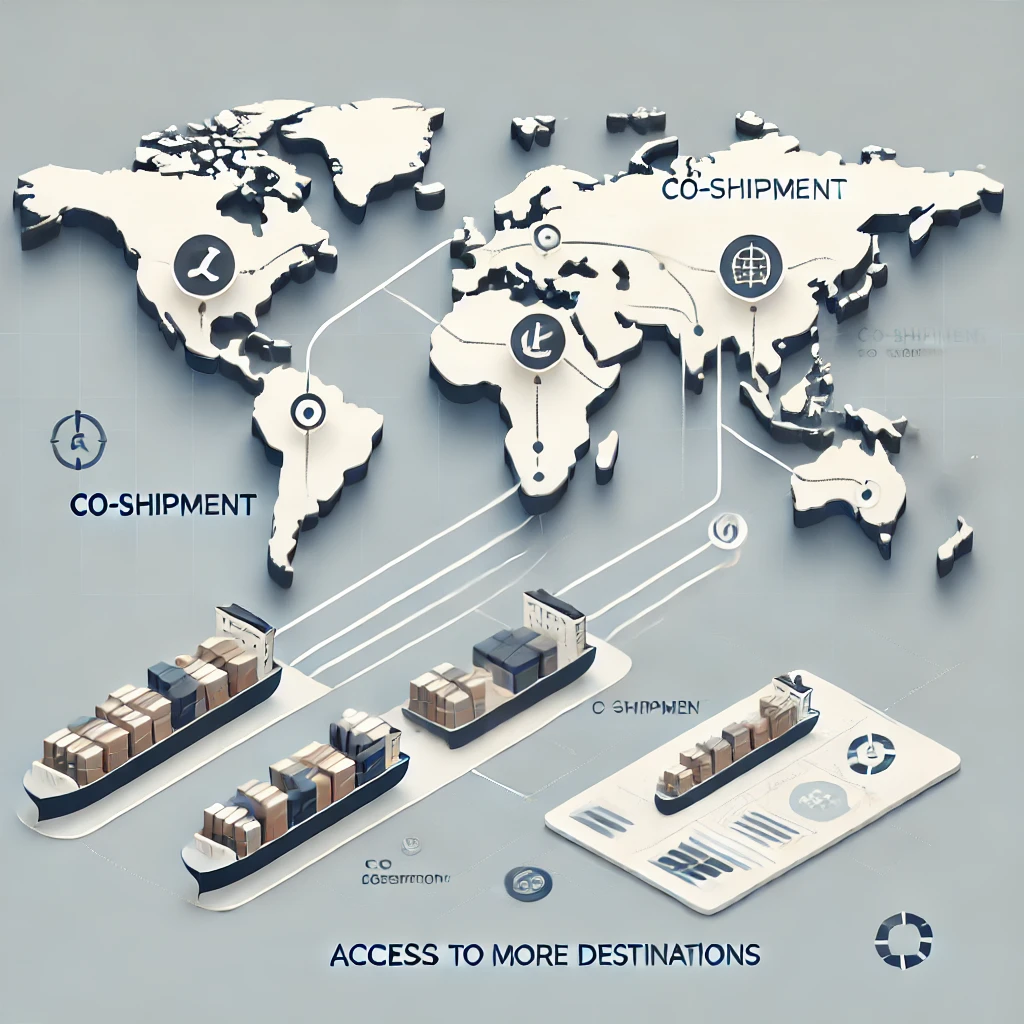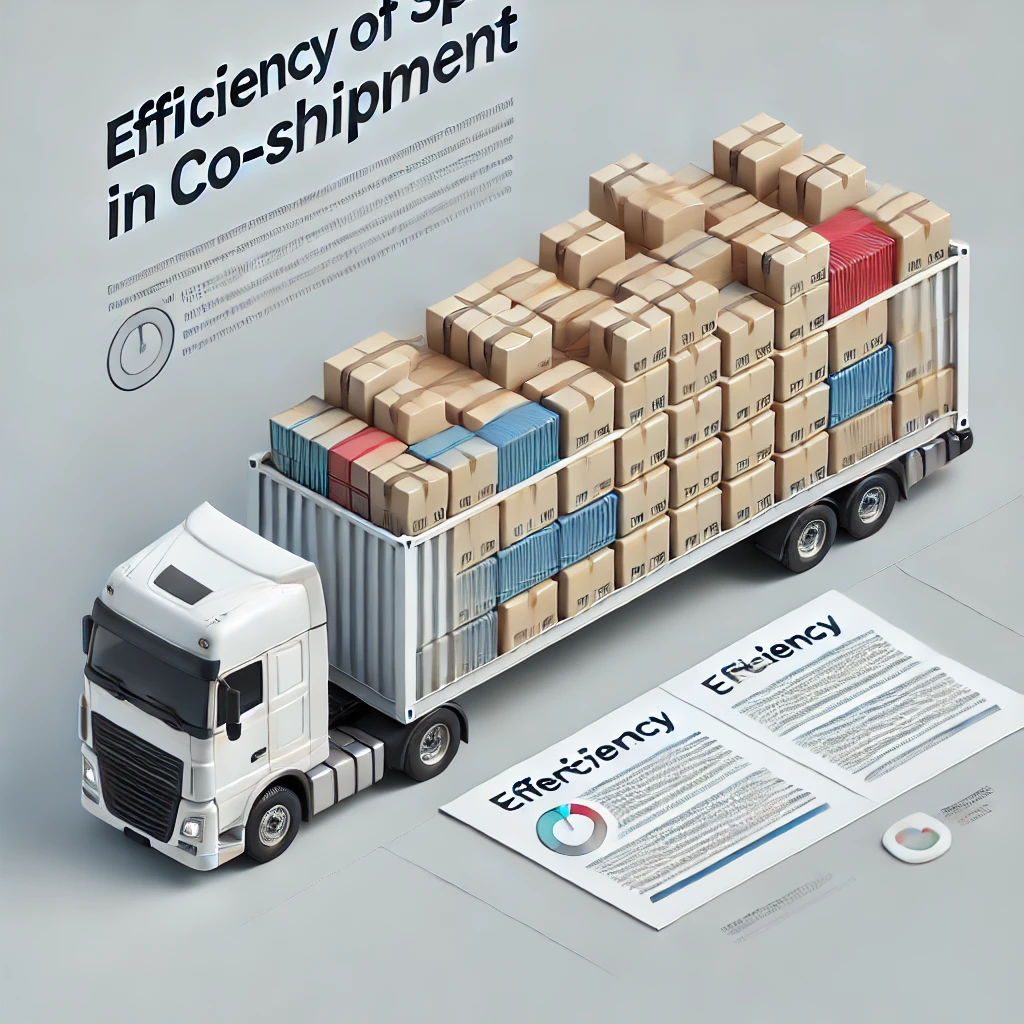Co-Shipment: A Comprehensive Guide to Collaborative Freight Solutions

What is Co-Shipment?
Co-shipment, also known as or consolidated shipping, is a logistics strategy where multiple shippers combine their goods into a single shipment. This collaborative approach allows businesses to share transportation costs and optimize cargo space utilization.
Key Aspects of Co-Shipment:
- Multiple shippers share container or truck space
- Goods from different companies are transported together
- Costs are divided among participating shippers
- Typically used for less-than-container load (LCL) shipments
The Benefits of Co-Shipment
Co-shipment offers numerous advantages for businesses of all sizes:
- Cost Reduction: By sharing transportation costs, each shipper pays less than they would for individual shipments.
- Improved Efficiency: Consolidating shipments leads to better utilization of cargo space and fewer partially filled containers.
- Reduced Carbon Footprint: Fewer shipments mean lower overall emissions, supporting sustainability goals.
- Access to More Destinations: Co-shipment can make it economically viable to ship to locations that might be too expensive for individual.
- Faster Transit Times: Consolidated shipments often move more quickly through the supply chain.
How Co-Shipment Works
Understanding the process of co-shipment is crucial for businesses considering this strategy:
- Booking: Shippers book space for their goods with a freight forwarder.
- Consolidation: Goods from multiple shippers are consolidated at a warehouse or distribution center.
- Documentation: Each shipment is documented separately, but transported under a single master bill of lading.
- Transport: The consolidated shipment is transported to its destination.
- Deconsolidation: At the destination, the shipment is separated, and each consignment is delivered to its respective recipient.
Co-Shipment vs. Traditional Shipping Methods
To fully appreciate co-shipment, it’s helpful to compare it with traditional shipping methods:
Co-Shipment vs. Full Container Load (FCL)
- FCL involves a single shipper using an entire container
- Co-shipment allows multiple shippers to share container space
Co-Shipment vs. Less than Container Load (LCL)
- Both involve multiple shippers sharing container space
- Co-shipment often offers more control and potentially lower costs
Co-Shipment vs. Air Freight
- Air freight is faster but more expensive
- Co-shipment by sea offers a cost-effective alternative for less time-sensitive goods
Types of Co-Shipment
Co-shipment can take various forms depending on the mode of transport and specific arrangements:
- Container Co-Loading: Multiple shippers share space in a single shipping container.
- Truck Co-Loading: Sharing space in a truck for overland transport.
- Air Freight Consolidation: Combining shipments for air transport.
- Mixed Mode Co-Shipment: Using a combination of transport modes (e.g., sea and road) for a single co-shipment.
Who Benefits from Co-Shipment?
Co-shipment can be advantageous for various stakeholders in the supply chain:
- Small and Medium Enterprises (SMEs): Allows access to more cost-effective shipping options.
- Large Corporations: Useful for smaller, less frequent shipments to certain destinations.
- E-commerce Businesses: Enables cost-effective shipping to international customers.
- Freight Forwarders: Offers an additional service to clients and optimizes operations.
- Carriers: Improves capacity utilization and operational efficiency.

Challenges of Co-Shipment
While co-shipment offers many benefits, it also comes with certain challenges:
- Coordination: Requires careful planning and coordination among multiple parties.
- Timing: May result in longer transit times due to consolidation and deconsolidation processes.
- Liability: Questions of responsibility in case of damage or loss can be complex.
- Customs Complexity: Multiple shipments in one container can complicate customs procedures.
- Limited Control: Shippers have less control over the shipping process compared to dedicated shipments.
Best Practices for Successful Co-Shipment
To maximize the benefits of co-shipment, consider these best practices:
- Choose Reliable Partners: Work with reputable freight forwarders or co-loaders.
- Clear Communication: Ensure all parties understand their responsibilities and the shipment details.
- Proper Packaging: Use sturdy packaging to protect goods during consolidation and transit.
- Accurate Documentation: Provide detailed and accurate information for each shipment.
- Plan Ahead: Allow extra time for consolidation and potential delays.
- Understand Regulations: Be aware of customs requirements for consolidated shipments in destination countries.
Technology and Co-Shipment
Advancements in technology are making co-shipment more efficient and accessible:
- Online Booking Platforms: Digital platforms connecting shippers with available co-loading opportunities.
- Track and Trace Systems: Allowing shippers to monitor their goods within consolidated shipments.
- AI and Machine Learning: Optimizing consolidation and routing for co-shipments.
- Blockchain: Enhancing transparency and security in transactions.
Co-Shipment in Different Industries
Co-shipment strategies can vary across different sectors:
Retail and E-commerce
- Useful for combining shipments from multiple suppliers or to multiple customers.
Manufacturing
- Can help optimize the shipment of components from various suppliers.
Pharmaceutical
- Requires careful consideration of temperature control and regulatory compliance.
Automotive
- Often used for shipping spare parts and accessories.
The Future of Co-Shipment
As the logistics industry continues to evolve, is likely to play an increasingly important role:
- Increased Digitalization: More digital platforms facilitating arrangements.
- Sustainability Focus: Growing emphasis on co-shipment as an eco-friendly option.
- Integration with IoT: Smart containers and tracking devices enhancing co-shipment efficiency.
- Expansion to New Modes: Potential growth in for emerging transport modes like autonomous vehicles.

Legal and Insurance Considerations in Co-Shipment
Understanding the legal landscape is crucial for successful:
- Contracts: Clear agreements between all parties involved.
- Insurance: Appropriate coverage for goods in consolidated shipments.
- Liability: Understanding who is responsible at each stage of the shipment.
- Customs Compliance: Ensuring all documentation meets regulatory requirements.
Co-Shipment and Load Cargo Optimization
Effective co-shipment is closely tied to efficient load cargo practices:
- Space Utilization: Maximizing the use of available container or truck space.
- Weight Distribution: Ensuring proper balance for safe transport.
- Compatibility: Considering the nature of different goods being co-shipped.
- Loading Sequence: Planning the order of loading for efficient unloading at destinations.
Co-Loader: A Key Player in Co-Shipment
A co-loader plays a crucial role in facilitating co-shipment:
- Definition: A freight forwarder specializing in consolidating shipments from multiple clients.
- Services: Offers consolidation, documentation, and sometimes customs clearance.
- Expertise: Provides knowledge in optimizing space and routing for co-shipments.
- Network: Maintains relationships with carriers and other forwarders to find co-loading opportunities.
Understanding Co-Loading Freight
Co-loading freight is at the heart of co-shipment strategies:
- Process: Combining multiple smaller shipments into a single larger shipment.
- Benefits: Reduces shipping costs and improves efficiency.
- Applications: Useful for ocean, air, and ground transportation.
- Considerations: Requires careful planning and coordination.

Conclusion: Embracing Co-Shipment for Modern Logistics
Co-shipment represents a significant opportunity for businesses to optimize their logistics operations. By sharing space and costs, companies can achieve more efficient, cost-effective, and environmentally friendly shipping solutions.
As global trade continues to grow and evolve, co-shipment is likely to become an increasingly important strategy. For businesses looking to stay competitive in the global marketplace, understanding and leveraging co-shipment can provide a significant advantage.
Whether you’re a small business looking to reduce shipping costs or a large corporation seeking to optimize your supply chain, co-shipment offers a flexible and efficient solution. By embracing this collaborative approach to freight, businesses can navigate the complexities of modern logistics more effectively, ultimately driving growth and success in an increasingly interconnected world.
Remember, successful requires careful planning, clear communication, and the right partners. As you explore options for your business, consider working with experienced freight forwarders or co-loaders who can guide you through the process and help you maximize the benefits of this innovative shipping strategy.
